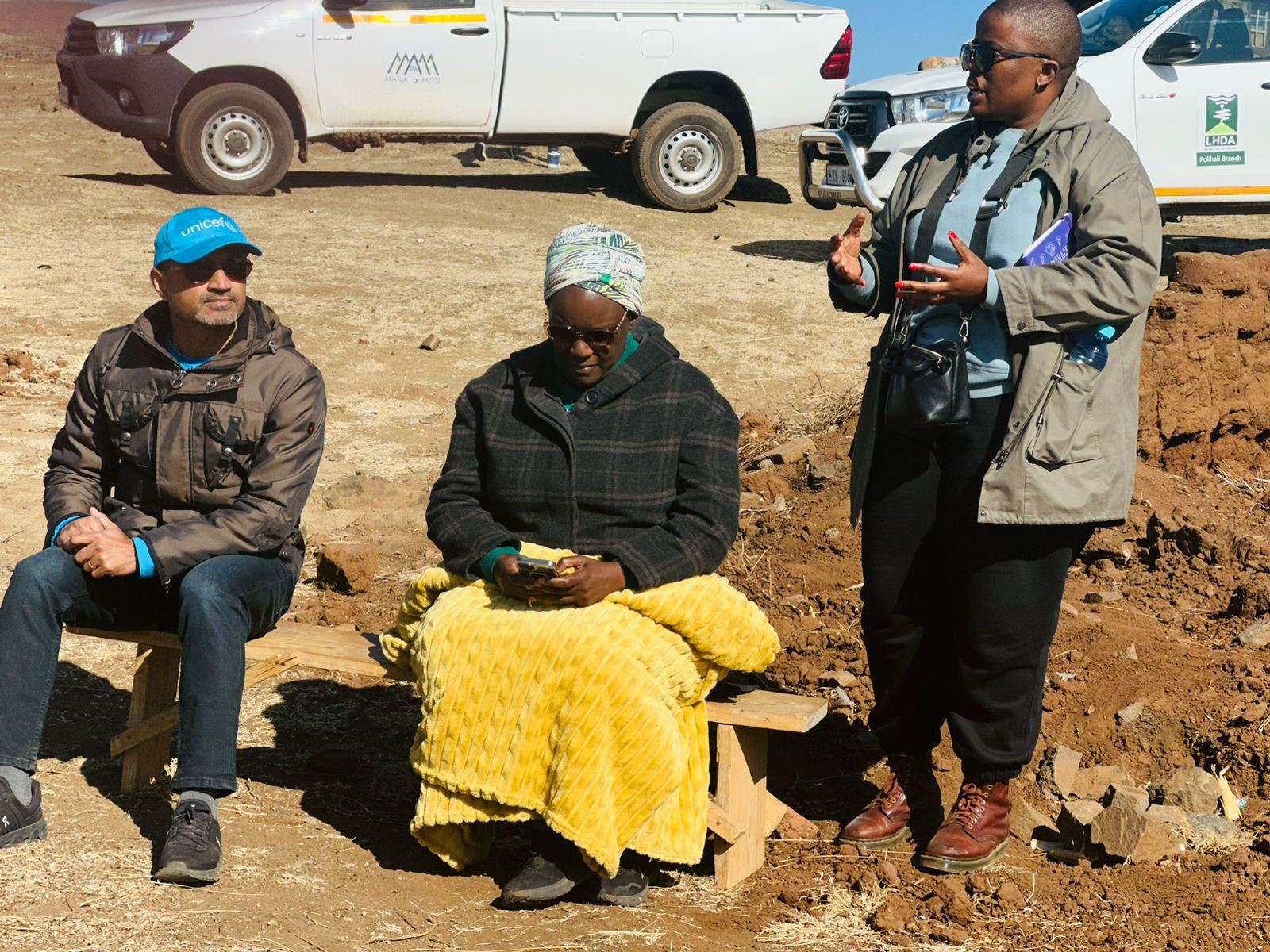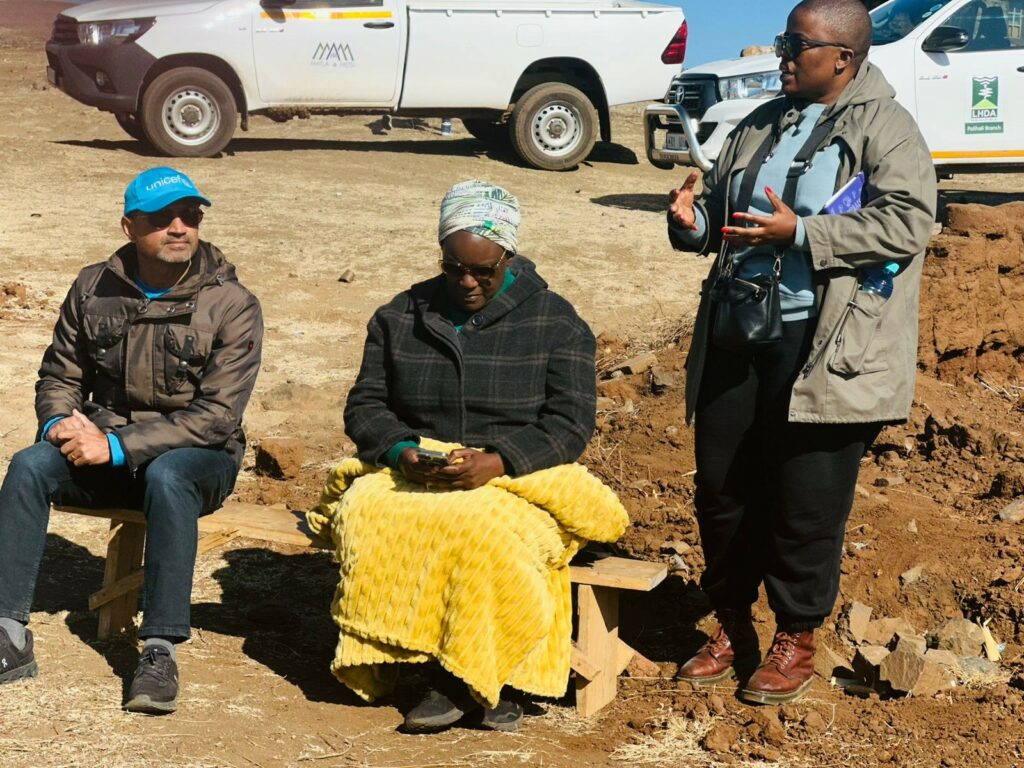
Figure 1 United Nations Resident Coordinator, Amanda Khozi Mkwashi and her delegation included The United Nations Children’s Fund (UNICEF) Representative Deepak Bhaskaran, Human rights officer from the Office of the High Commissioner for Human Rights, Lineo Tsikoane in Masakong, Mokhotlong.
Mamphasa Monethi (Seinoli Legal Centre
POLIHALI, Lesotho – United Nations Resident Coordinator, Amanda Khozi Mkwashi, on Thursday led a delegation that visited communities who have been negatively affected by the second phase of the Lesotho Highlands Water Project (LHWP II).
Her delegation, which included The United Nations Children’s Fund (UNICEF) Representative Deepak Bhaskaran, Human rights officer from the Office of the High Commissioner for Human Rights, Lineo Tsikoane, and UN Communications Officer, Reitumetse Russell, sought to hear the grievances of communities that are being displaced by the Polihali dam project.
The delegation visited villagers in Tsekong and Masakong and heard that communities had been adversely affected by activities like blasting in the dam reservoir area.
Issues raised
Some of the villagers complained that their safety, livelihoods and health were now at risk because of blasting activities.
In the meeting, community representative Thabo Motabola from Tsekong said blasting activities were undertaken indiscriminately both during the day and at night. Whenever the blasting was done at night, it gave animal rustlers an opportunity to steal livestock undetected.
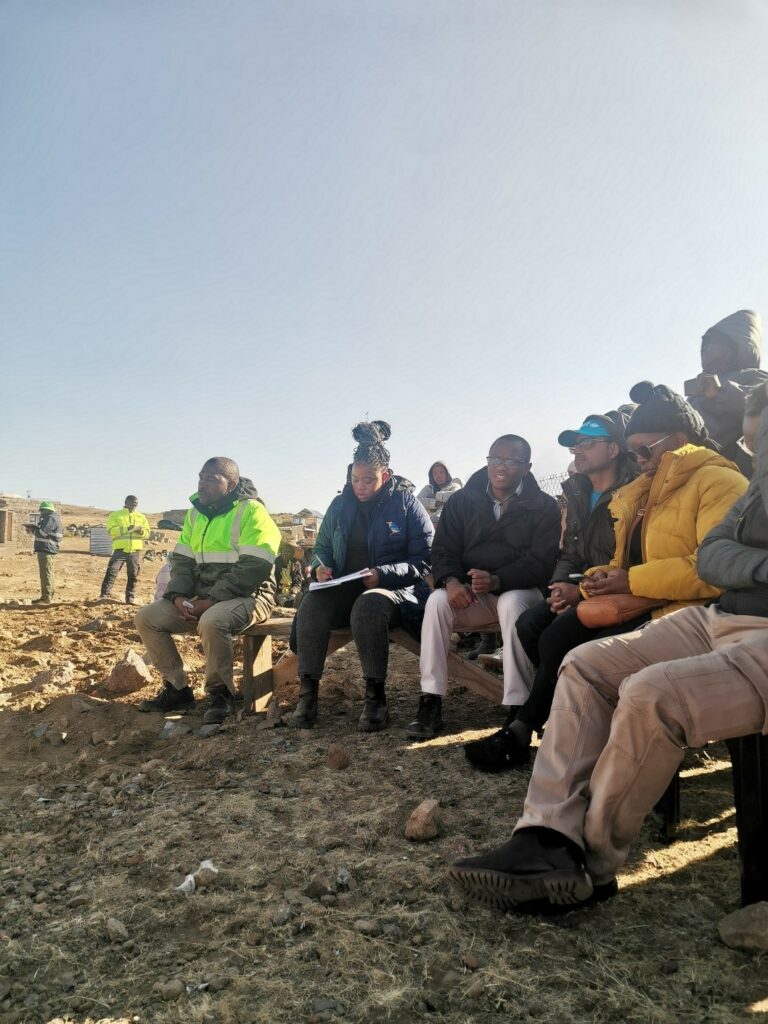
Figure 2 Communities raising their issues regarding the Polihali dam project.
He said that fumes from the blasts are also toxic and are resulting in villagers suffering different kinds of respiratory problems. Others, including children, are now experiencing hearing and sight problems. All this because the nearby communities were not being given protective gear such as masks. Neither were they provided with shelter for safety during blasting activities.
Another villager, Makanono Leleka, added that debris from a blast came dangerously close to humans and property when it landed in her yard last Thursday posing serious risk of injury and damage.
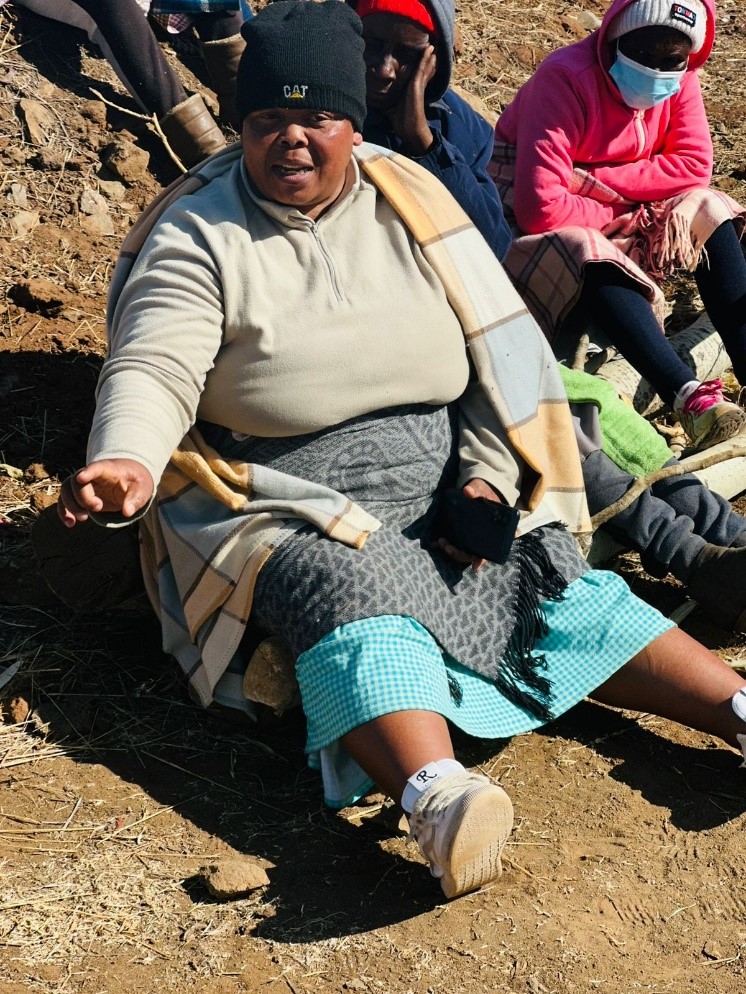
Figure 3 Community member from Tsekong Ms. Makanono Leleka.
Due to the blasting, the community well, their only water source, was now contaminated by unknown chemicals. The well was also within the dam area and was now inaccessible to the villagers as it had been fenced in and there was no other means to get water as they did not have taps or other water resources.
The water situation is worsening by the day as streams in the area have also been contaminated. So bad was the situation that animals were dying after drinking from the nearby streams.
The villagers said some of their houses were cracking because of tremors from the blasts. They accused the Lesotho Highlands Development Authority (LHDA) of not conducting pre and post assessment studies for community property and assets. The villagers alleged that the LHDA was turning down their claims on property damaged by the blasts.
Communities demand compensation for lost grazing pastures
A quarry site established in the Tsekong village first in 2018 and extended in 2023, has now taken away huge swaths of land which were previously the community’s grazing land. The villagers said they had received neither compensation, alternative pastures nor fodder for their animals. This had resulted in a serious threat to the community’s food security considering the prevailing drought conditions in Southern Africa.
Villagers cry for transparency on compensation
The villagers said they were never consulted regarding the formula for individual household compensation for displacement and loss of property. They said the compensation was extraordinarily little, and they were unaware of the basis on which the compensation was arrived at. The LHDA pays M20.24 per square meter for affected fields. However, when they sought clarity, they were never answered, they alleged. They also said they were unaware when they should expect compensation.
Masakong community grievances
Villagers in Masakong registered similar concerns. Community representative, Lebohang Lengoasa, said it was now difficult to raise children in the area as they were grappling with incessant noise and air pollution. These posed serious health risks for minors. He said they had requested to be relocated before the beginning of the implementation process, but the call fell on deaf ears.
Broken promises
The community said it was promised that villagers would be prioritized when it came to jobs in the project. However, the LHDA has allegedly reneged on the offer with over 50 men currently unemployed in the area while women seldom got jobs. The LHDA also promised to seek services like transport and catering from the community, but these contracts were never given to the villagers.
“With our compensation money, we bought taxis, but the LHDA is now saying that it requires buses when it had promised that it would hire our taxis,” one villager who has been paid compensation said. He alleged that there were also a lot of underhand dealings in the hiring process.
Impacts on the community’s livelihoods
The communities have always depended on their livestock, agriculture and on important resources such as firewood, traditional herbs, and medicinal plants which are no longer accessible due to the project’s fencing.
Intimidation
The villagers also complained that whenever they attempted to voice their concern, they were threatened with violence by the police. Apart from writing letters to the LHDA, the communities said they had no other way to seek recourse and whenever they wrote letters, the LHDA often ignored them. To jolt the LHDA and its contractors’ action, the community in some instances staged peaceful protests. “The LHDA does not even have a complaints mechanism in place for us to lodge complaints we have with different contractors.”
“Even when we try to engage with the LHDA by inviting them to the village to discuss our issues, they do not attend. The LHDA does not even have a complaints mechanism in place for us to lodge complaints we have with different contractors,” another villager said.
Some hope for recourse.
After listening to their grievances, the UN Resident Coordinator Ms. Amanda Khozi promised the communities that the UN would conduct further investigations, and a report would be released later. The report will be shared with the UN headquaters in Geneva and with Prime Minister Sam Matekane.
The UN delegation then engaged the LHDA and presented the community’s concerns. The LHDA requested a meeting specifically to address the issues. In response, Ms. Mkwashi said in the proposed meeting, one of the issues LHDA should be prepared to address was coming up with a social development plan to ensure that the villagers were part of the planning and implementation of that plan. The plan was also supposed to be in accordance with international standards and should have feedback and accountability mechanisms.
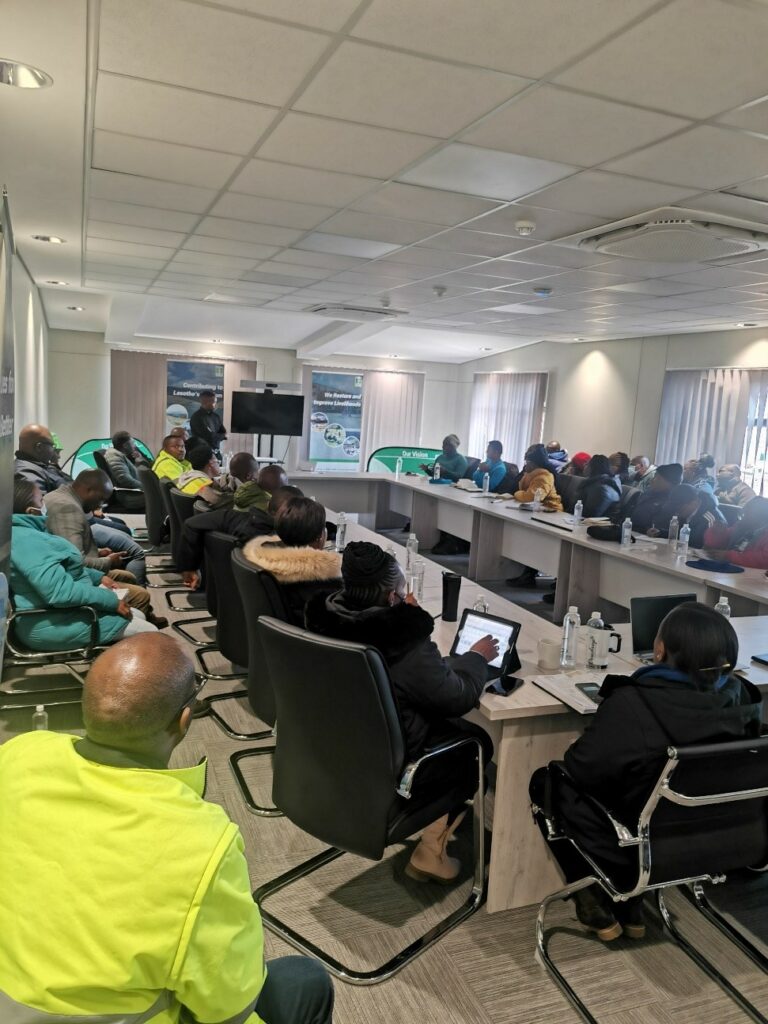
Figure 4 Community Grievences were presented before the LHDA.
While addressing the community, Bhaskaran stated that the delegation was extremely glad to have heard from communities directly about their concerns.
“The key role of the delegation is to ensure that your rights are not being violated. We have picked that there are environmental issues and impacts on your livelihoods and generally your means of livelihood. We hear that there are promises made and you are still waiting for those promises to be fulfilled. We will ensure that a report will be produced and shared. Continue to inform us about the challenges you face and tell your communities until these issues are addressed,” Bhaskaran told the Masankong villagers.
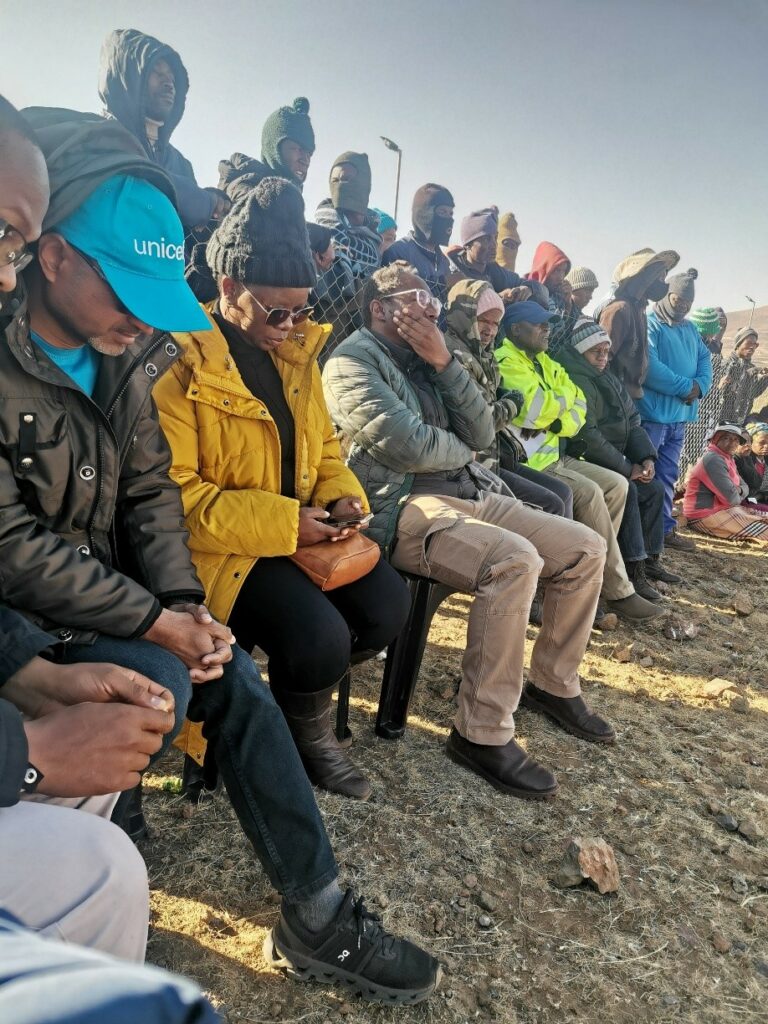
Figure 5 The United Nations Children’s Fund (UNICEF) Representative Deepak Bhaskaran in Masakong which is being displaced by the Polihali dam project to hear the grievances of communities.)


